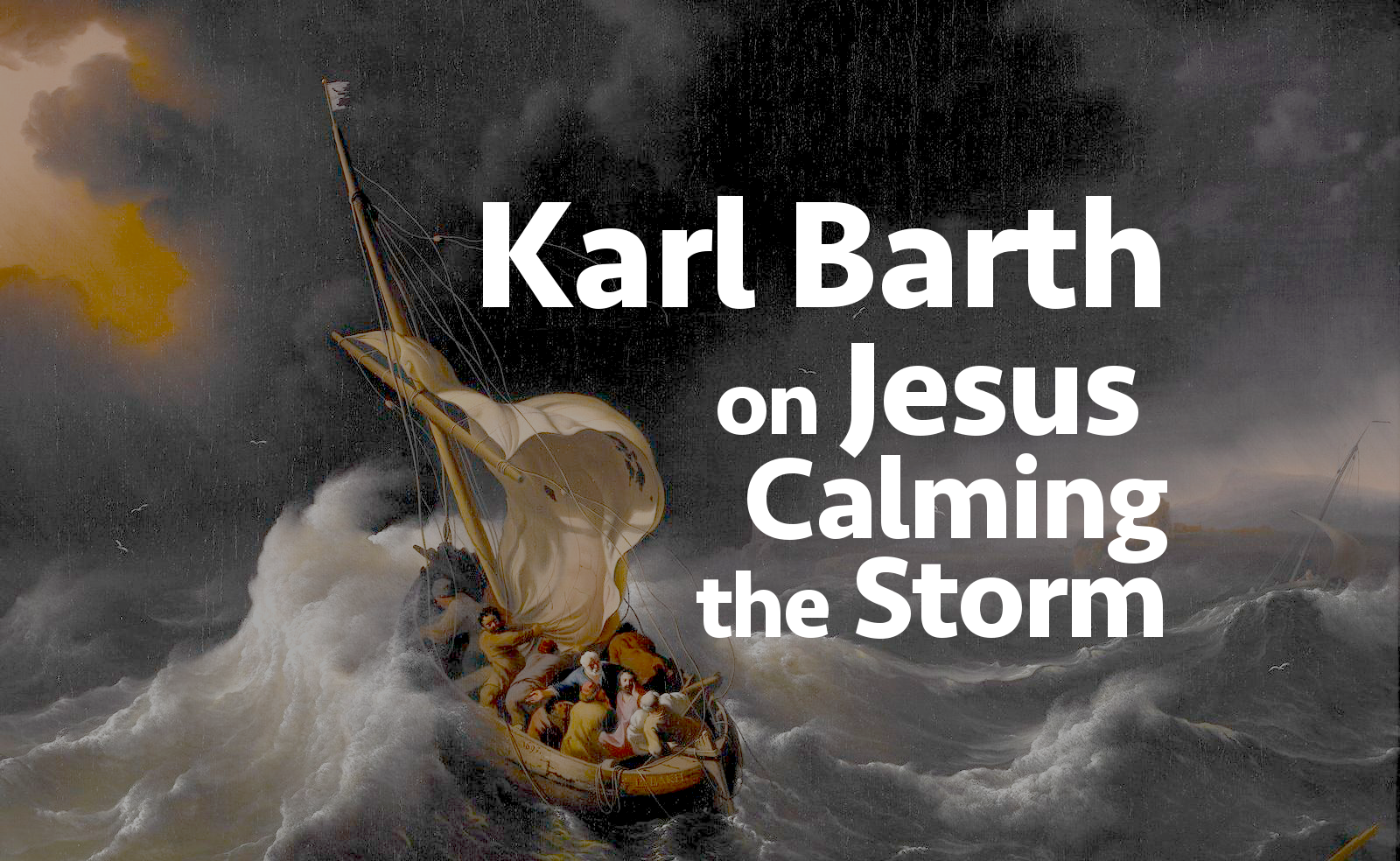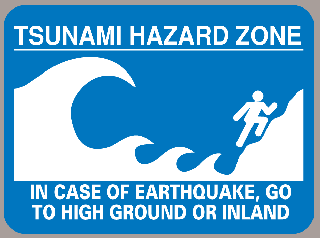 The Miracle of Jesus Calming the Storm is my favorite passage from the life of Jesus, so I was delighted to find Karl Barth's eye-popping exposition of it in a small print section at the end of the Church Dogmatics IV/3.2. Barth believes this miracle is not isolated to novice Galilean fisherman, but applies directly to the Christian Church throughout all ages, including its strongest times, including its medieval strength with its extravagant episcopal vestments of that era. Even when the Church is at it's strongest, it is still susceptible to be shaken severely like the great storms of this story. When the Church is severely shaken to a degree greater than any human institution could withstand, we may have faith that the Church will not fail because Jesus is in the boat. Barth's exposition encourages us that when the Church is shaken more than the strongest man-made ships may withstand, we may have faith that the Church will not fail, because lo, Jesus is with us until the end of the age.
The Miracle of Jesus Calming the Storm is my favorite passage from the life of Jesus, so I was delighted to find Karl Barth's eye-popping exposition of it in a small print section at the end of the Church Dogmatics IV/3.2. Barth believes this miracle is not isolated to novice Galilean fisherman, but applies directly to the Christian Church throughout all ages, including its strongest times, including its medieval strength with its extravagant episcopal vestments of that era. Even when the Church is at it's strongest, it is still susceptible to be shaken severely like the great storms of this story. When the Church is severely shaken to a degree greater than any human institution could withstand, we may have faith that the Church will not fail because Jesus is in the boat. Barth's exposition encourages us that when the Church is shaken more than the strongest man-made ships may withstand, we may have faith that the Church will not fail, because lo, Jesus is with us until the end of the age.
The Story of the Calming of the Sea
The miraculous event is in the synoptic triple tradition, appearing in Mark 4:35-41, Luke 8:22-25, and Matthew 8:23-27, and it has striking similar to the miracle of Jesus walking on water (cf. Matt 14:22-36; Mark 6:45-56; John 6:16-24). In Barth's exposition of the Miraculous Calming of the Storm is from the Markan account, and this is not surprising since Mark generally given priority in the triple tradition today by New Testament scholars. Luke is mentioned once or twice, and there's no mention of Matthew. In this parable, a great storm arises as the disciples row desperately across the Galilean sea, as Jesus sleeps peacefully in the belly of the ship. The Disciples awaken Jesus and rebuke him for allowing them to be in their perilous predicament, but to their astonishment, Jesus rebukes the storm and the sea becomes calm. The disciples suddenly fear Jesus more than they ever feared the dissipated tempest.
Mark 4:35-41 (NRSV) "On that day, when evening had come, he said to them, “Let us go across to the other side.” And leaving the crowd behind, they took him with them in the boat, just as he was. Other boats were with him. A great windstorm arose, and the waves beat into the boat, so that the boat was already being swamped. But he was in the stern, asleep on the cushion; and they woke him up and said to him, “Teacher, do you not care that we are perishing?” He woke up and rebuked the wind, and said to the sea, “Peace! Be still!” Then the wind ceased, and there was a dead calm. He said to them, “Why are you afraid? Have you still no faith?” And they were filled with great awe and said to one another, “Who then is this, that even the wind and the sea obey him?”
Also, Barth does not mention Psalms 107:23-32, which has striking similarities to this miracle:
Psalm 107:23-32 (NRSV), "Some went down to the sea in ships, doing business on the mighty waters; they saw the deeds of the Lord, his wondrous works in the deep. For he commanded and raised the stormy wind, which lifted up the waves of the sea. They mounted up to heaven, they went down to the depths; their courage melted away in their calamity; they reeled and staggered like drunkards, and were at their wits’ end. Then they cried to the Lord in their trouble, and he brought them out from their distress; he made the storm be still, and the waves of the sea were hushed. Then they were glad because they had quiet, and he brought them to their desired haven. Let them thank the Lord for his steadfast love, for his wonderful works to humankind. Let them extol him in the congregation of the people, and praise him in the assembly of the elders."
Seismic Storms
I relate to this story, since I live near the Cascadia Subduction Zone, and am frequently in tsunami hazard zones, where there's a constant fear that the Pacific Ocean would produce a devastating tsunami. In the Matthew version, the storm is referred to as a seismos (cf. Matt 8:24) which is the same word for earthquake (i.e. "Earthquake storm"), and earthquakes in the ocean produce tsunamis, and so I always think of tsunamis when I read this story of fisherman desperately rowing away from the storm. I don't believe Matthew is describing a tsunami, but it does help me apply this story to the time and place where I live in the Pacific Northwest. As Karl Barth once said, "One should preach with the Bible in one hand and the newspaper in the other."
Karl Barth on the Story of the Crossing of the Lake
Karl Barth's exposition of the Story of the Crossing of the Lake is in the Church Dogmatics IV/3.2 §72.
We must not forget, however, the story of the crossing of the lake as told in Mark 4:35-41. Inevitability the New Testament ekklasiai (churches) find their own story here. But what serious or final relationship is there between this and their high position in relation to other worldly structures? For what does it imply? To be sure, the ship is impressively manned by the disciples whom Jesus has already chosen and called to be His apostles. Carefully attired, according to mediaeval fancy, in the correct episcopal vestments, they are the rowers. According to the Markan context, Jesus has just spoken of the light set on a candlestick, and the seed which grows of itself and becomes a great plant, and to them alone, as we are expressly told, He has expounded these parables. They are not, then, a motley group of inexperienced novices. Nor are they alone with a mere tradition or recollection of the words and person of their Lord. Jesus Himself is with them. But "he was in the hinder part of the ship, so that it was now full," these men who were elect and called, who had already received so many promises and consolations in respect of their own existence as His people, who had indeed the assurance of His own presence, seemed to be cast back upon their own faith and in the last resort upon its bold action in exercise of their seamanship.
But lo! their apostolic office, their episcopal habits, their experience, their tradition, even the living but sleeping Jesus among them, all appear to be useless. The storm is too violent. The pillar and ground of truth totters. The gates of hell are menacingly open to engulf them. They are terrified that the ship and they themselves and Jesus will all perish, that it will be all up for them, as the community has often since had cause to fear and has actually feared. Basically, of course, it has never had any true reason, but it has certainly had occasion enough. The situation is obviously too much for his disciples. Similar situations have always been too much for the community, as has, indeed, its whole situation in the world.
If Jesus were not in the ship, it must inevitably have gone down. But He is in the ship, and for this reason, if for this reason alone, it cannot go down. His disciples will necessarily be preserved with Him. They need not have waken Him. They are not praised for doing this. On the contrary, they are rebuked for their fearfulness, being asked: "How is it that ye have no faith?" ("Where is your faith?" Luke 8:25). Even if the storm had increased rather than abated, and even if they themselves were helpless in face of it, that which He made them, that which they had received of Him, their freedom and power in view of the kingdom of God relentlessly drawn near, their instruction concerning the light on the candlestick and the mustard seed, and decisively the living presence of Jesus, should have been enough to assure them that this ship could not and would not go down, nor we, this people, perish.
"Fluctuat, nec mergitur" ("It is being tossed, but it is not sinking"). But Jesus tells them this only after He has rebuked the wind, and bidden the raging sea be still, and therefore dismissed all cause for fear, revealing how groundless it is, and showing Himself to be the sure basis of their existence as His people and therefore the unassailable basis of their tottering faith. "There was a great calm," for in the living presence of Jesus there was revealed His living action, His self-declaration in deeds. He not only was what He was for them, their Lord and Deliverer; He made Himself known to them as such. He made peace for them. No doubt His people could and should have clung simply to the fact that through Him alone, but genuinely through Him, it had peace and would be and was sustained.
But supposing it did not do what it could and should do? Supposition its faith was feeble? Supposing that in spite of all that it was through Him and had received from Him, and even in spite of His tangible presence, it was miserably afraid for itself and for Him in the midst of world-occurrence? He Himself gave the answer to this sorry defiance with His superior and joyful defiance. He upheld it, yet also revealed Himself as the One who did so. He was its unassailable basis, and showed Himself to be so. The story ends with the noteworthy statement that when the wind dropped, when the cause of their fear was removed, when Jesus not only was their Preserver but visibly showed Himself to be such, "they feared exceedingly (ephobathasan phoban megan), and said to one another, What manner of man is this, that even the wind and the sea obey him?"
We recall that according to the same Gospel (16:8) the women were seized by fear and trembling at the empty tomb of the Resurrected, and dared tell no one what they had seen, for "they were afraid." We also recall the Bethlehem shepherds, who were so terrified (Luke 2:9, using the same word as Mark 4:41) when the angel of the Lord appeared to them and the glory of the Lord shone round about them. What was this fear? It was the great and necessary and legitimate fear of the Lord which, as the beginning of wisdom, began with the end of the little and unnecessary fear which could only lead the community to despair of itself, its apostolate, its faith and indeed its Lord. And the end of the little fear came with the fact that Jesus not only was its Savior but manifested Himself as such and therefore as the sure foundation of its existence as His people, of its apostolate and of its faith. "What manner of man is this?" Could the community do any better, or show itself in any better way to be the people placed at that high point, than by letting itself be gripped and moved by this great and holy and joyous fear in face of His self-declaration? It became and was indeed the light of the world, the pillar and ground of truth, by letting itself be seized with this fear when it saw Him as the One who showed Himself to be its Lord within world-occurrence. This was the decisive happening on the crossing. It is always on such a crossing, in the power of the active self-declaration of its Lord, and as it is plunged into fear by this self-declaration and the knowledge it brings, that the New Testament community has achieved and does achieve its self-understanding in relation to its distinctive and unique existence. There is no other way. And it is obvious that in this respect its self-understanding is coincident with that of the Old Testament people of God. [1]
References:
- [^Header Image] By Ludolf Bakhuizen - [1], Public Domain, Link
- [^Tsunami Warning Sign]: http://pubs.usgs.gov/circ/c1187/
- [^1] Barth, Karl. Church Dogmatics, The Doctrine of Reconciliation, Vol IV/3.2. Vol. 29. London: T & T Clark, 2010. 51-54. Print. Study Edition. [733-4]
Related: CD IV/3.2, Church Dogmatics, Church Dogmatics IV/3.2, Doctrine of Reconciliation, Earthquake, Jesus, Karl Barth, Miracle of the Calming of the Storm, Q, Seismos, Story of the Calming the Storm




Leave a comment